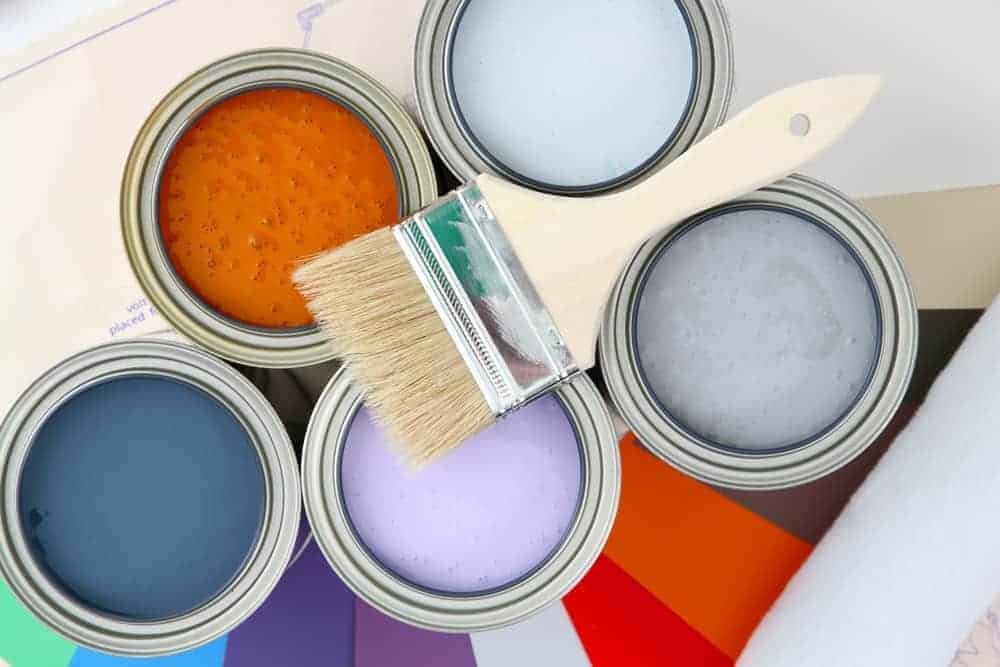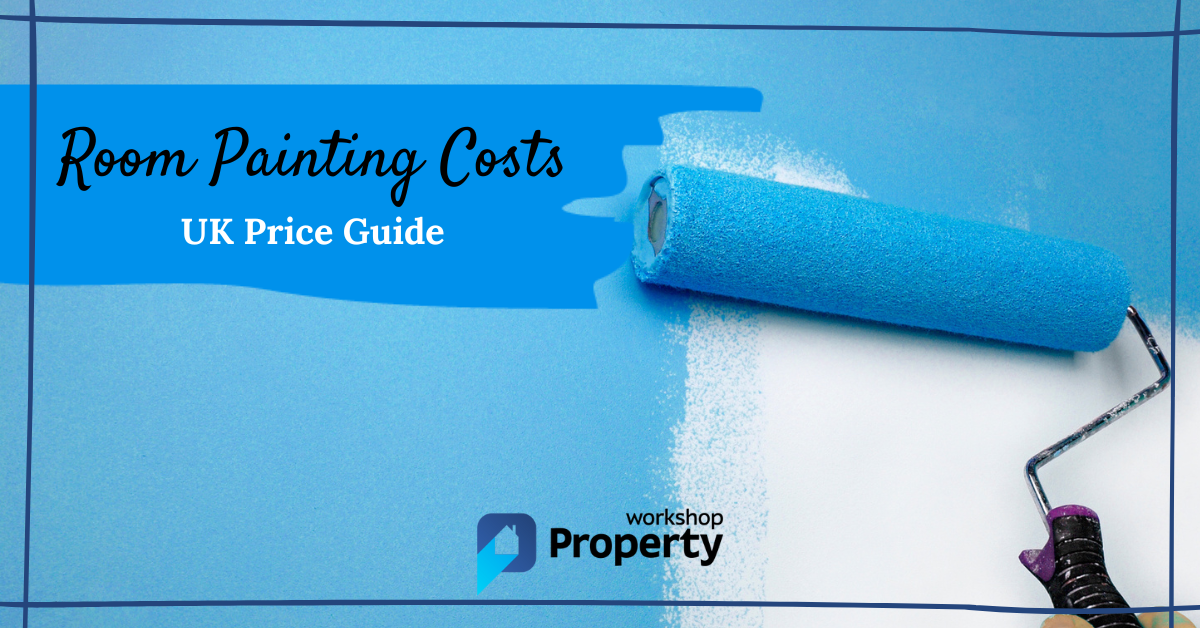One of the easiest ways to breathe new life into your home is with a fresh lick of paint. This simple yet affordable project can transform dull, tired-looking rooms into bright and inviting spaces.
Like any project, the final cost will vary based on the amount of preparation required, the size of the room and whether you decide to do it yourself or hire professional help.
In this article, we’ll break down UK room painting costs so you can decide whether to hire a decorator or pick up that paintbrush yourself!
In a Hurry? Find top-rated decorators in your area by clicking the button below:
Room Painting Costs To Consider

When working out your budget, look closely at the room you’ll be painting and check that no areas need to be repaired. If there are, this must be factored into your overall costs.
For example, do you need to clean your walls? Paint will not apply properly to greasy surfaces or walls marred with nicotine stains — so you’ll need to clear them up first. The wallpaper must also be removed, and any holes or old fixtures must be filled before work begins.
Next, measure the size of your room. If hiring a professional, providing these measurements will help you get an accurate quote.
But even if you’re going the DIY route, you’ll need to know the dimensions to figure out how much paint you’ll need. Factor in extra costs if you’re painting these areas too:
- Skirting boards
- Door frames
- Windowsills
- Trim
- Ceilings
Prepping, Labour & Materials
Prepping can often take as long as the painting when it comes to painting a room. This checklist will give you an idea of how much time you’ll need to plan for your project:
- Shopping for materials — 1 hour
- Removing furniture and covering floors — 30 minutes
- Cleaning walls — 1–2 hours
- Stripping wallpaper — 3–6 hours
- Tape up boundary areas like trim or skirting boards — 45 minutes
- Painting walls — 90 minutes (per coat; two is recommended for good cover and a lasting finish)
- Painting trim, windowsills, skirting boards, and doors — 2 ½ to 3 hours
Our guide to painting a room with no mess and the video below by Wickes provide everything you need to know when preparing a room for painting.

Labour
Of course, if you undertake the project yourself, there’ll be no labour cost apart from your time. If you hire a professional, do the prep work before they arrive to reduce labour costs.
If you’re being charged by the hour, this is great news as you saved a few hours of labour costs.
For a day’s work, a decent price range for professional services is between £200 and £500, depending on room dimensions and whether you go with a local company or a larger, more well-known service.
Materials
On average, the materials required for painting a room will cost between £100–£150, although you could see a higher price tag depending on the products you pick.
One tin of paint should cover about 37 square meters, but in addition to the paint, you’ll also need to purchase rollers, brushes, masking tape and sandpaper.
A painting tarp is also recommended to avoid getting paint on the floor, but old sheets will work just as well. You must purchase white spirits or sugar soap to clean your walls.
Also, if you’re redoing your detail work, you might need different brush sizes and an additional paint colour or stain to achieve the look you’re going for.
DIY or Hire a Pro?
There are pros and cons to both DIY and professional services.
When you go DIY, you’ll save money; but if you’re inexperienced, you may not achieve the results you were hoping for and waste plenty of your precious time. Even worse, you may encounter complications you don’t know how to address.
Using a trusted professional service will guarantee exceptional work. However, it can double the costs of doing it on your own.
Let’s take a look at a simple cost comparison below.
*This chart is based on an average size room of 3.3m x 3m*
| Cost | DIY | Professional |
|---|---|---|
| Materials | £125 | £150 |
| Labour | £0 | £200 (for 1 and ½ days) |
| Time | 1–2 Days | 1–2 Days |
| Total Cost | £125 | £350 |
You can see that when using professional services, you pay extra for labour and experience. It is important to note that professional companies will mark up the cost of the products, increasing their bid.
Pro Tip: You can provide the materials to eliminate this extra cost.
Tips & Advice
When picking your contractor, ask plenty of questions before making your final decision. For example, if you’re not providing your own materials, check to see what brand of paint they use to ensure you aren’t overcharged or receiving low-quality material.
Also, do they charge by the hour or at a fixed rate? Fixed-rate is often a better choice, as no matter what complications come up, your budget will remain the same, minus extra materials. Fixed-rate also motivates the contractor to get the job done quicker!
Rated People offers a great way to find trustworthy and highly skilled decorators in your area if you’re worried about unscrupulous contractors.
Don’t fancy doing this job yourself? Find top-rated decorators in your area by clicking the button below:
Final Thoughts
Home improvement projects don’t have to be expensive to look good. In the world of DIY, painting a room is one of the quickest and simplest ways to improve the appearance of your home.
With a little research and preparation, this is an easy job. However, if you’d rather hire professionals, expect to pay around £300 for labour and materials.

